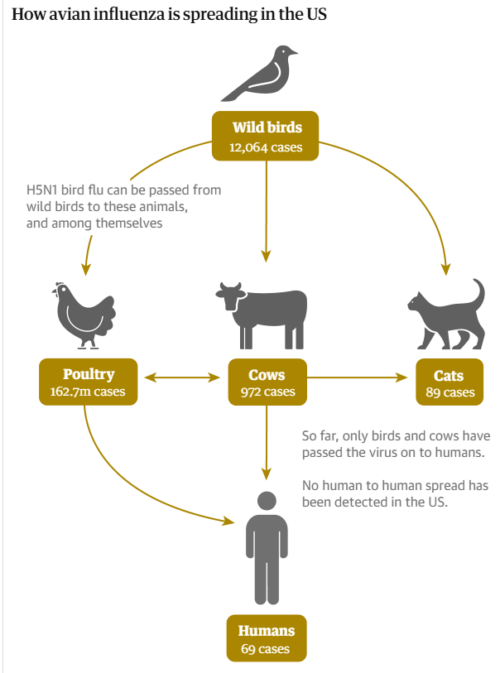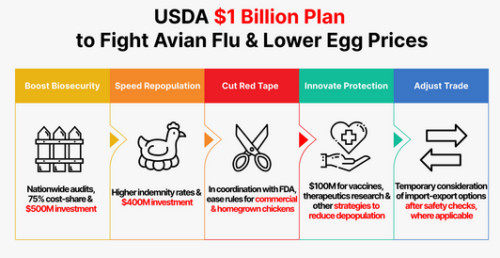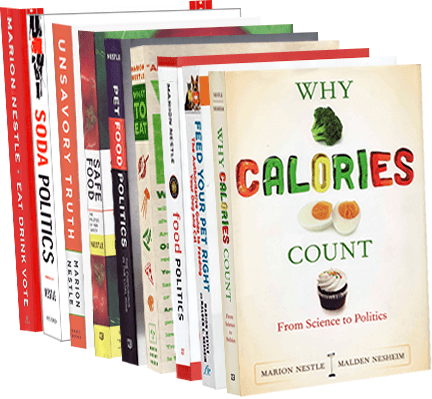Bird flu, raw milk, and cats
Bill Marler forwarded his post about how some pet cats got bird flu from drinking raw milk or eating raw pet food.
He learned about this from a Los Angeles County Animal Health Alert: H5 bird flu confirmed in four domestic cats that consumed recalled raw milk, and in one cat that consumed commercially produced raw pet food.
The Guardian explains how transmission works.

Pet Food Industry writes, Raw pet food linked to H5N1 infection, cat euthanizations: Officials found the cats all consumed the same brand of raw pet food before becoming ill. Read more
Mother Jones asks: A Raw Milk Magnate Has Spent Years Fighting Public Health Agencies. Will RFK Jr. Take His Side? (The article is about Mark McAfee, founder and CEO of Raw Farm, which sells the raw milk allegedly implicated in the death of cats.
Marler lists lawsuits over previous outbreaks—among humans—attributed to tRaw Farm milk.
Marler published a Parents’ guide to the safe use of raw milk. His conclusion:
There is a movement in the U.S. to consume organic, locally grown, unprocessed, more nutrient-dense foods.
Some believe raw milk is more nutritious and provides the body “good bacteria.”
There are many other foods that contain “good bacteria” and are less risky than raw milk. Many stores carry pasteurized yogurt and kefir with probiotics that are very safe to feed children.
There are also high quality nutritional supplements that can be used to add probiotic bacteria into one’s diet.
For more information visit www.realrawmilkfacts.com.
Other resources
Phyllis Entis (aka FoodBugLady), who writes a newsletter about food safety, efoodalert.com, discusses bird flu in cats and includes a useful handout from the Washington State Department of Agriculture on the topic.



